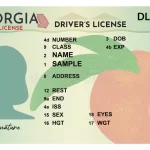Navigating the Wreckage: A Comprehensive Guide to Buying a Car with a Salvage Title

Buying a car is a significant investment, and for many, the dream of owning a set of wheels comes with a hefty price tag. But what if there were a way to get behind the wheel of a vehicle at a significantly reduced cost? Enter the world of salvage title cars. While the term “salvage” might conjure up images of mangled metal and irreparable damage, these vehicles can offer incredible value for savvy buyers willing to do their homework and accept a degree of risk.
This comprehensive guide will delve into the intricacies of buying a car with a salvage title, covering everything from understanding what a salvage title means to the steps you need to take to ensure you’re making an informed decision. We’ll weigh the pros and cons, discuss the potential pitfalls, and equip you with the knowledge you need to navigate the salvage title landscape with confidence.
Understanding Salvage Titles: What Does It Mean?
A salvage title isn’t just a fancy name; it’s a legal designation assigned to a vehicle that has been deemed a total loss by an insurance company. This usually happens when the cost to repair the damage exceeds a certain percentage of the vehicle’s pre-damage value, which varies by state. This percentage can range from as low as 70% to as high as 100%.
Common Reasons for a Salvage Title:
- Accidents: This is the most common reason. Significant damage to the frame, engine, or other critical components can lead to a total loss declaration.
- Flooding: Water damage, especially saltwater, can wreak havoc on a vehicle’s electrical system and mechanical components, often resulting in a salvage title.
- Theft: If a vehicle is stolen and recovered with significant damage or after a considerable period, the insurance company may declare it a total loss.
- Hail Damage: Severe hailstorms can cause extensive cosmetic damage, making it economically unfeasible to repair.
- Vandalism: Extensive vandalism, such as fire damage or intentional destruction, can also lead to a salvage title.
Key Differences Between a Salvage Title and a Clean Title:
The primary difference lies in the vehicle’s history and perceived value. A clean title indicates that the vehicle has not been declared a total loss and has a relatively untarnished past. A salvage title, on the other hand, carries the stigma of significant damage and is subject to stricter regulations and inspection requirements.
It’s helpful to understand the hierarchy of vehicle titles to grasp where salvage titles fit in:
- Clean Title: As mentioned, this is the most desirable title, indicating no significant damage or loss.
- Salvage Title: Indicates the vehicle has been declared a total loss by an insurance company.
- Rebuilt Title: A salvaged vehicle that has been repaired and inspected, allowing it to be legally driven on public roads.
- Junk Title: Similar to a salvage title, but typically indicates the vehicle is beyond repair and can only be used for parts or scrap.
- Certificate of Destruction: A legal document stating the vehicle is intended for destruction and cannot be legally re-registered.
The Appeal of Salvage Title Cars: Why Consider Buying One?
Despite the inherent risks, salvage title cars offer several compelling reasons to consider them:
- Significant Cost Savings: This is the most significant draw. Salvage title cars can be purchased for a fraction of the price of a comparable vehicle with a clean title. These savings can be substantial, allowing you to own a more luxurious or newer car for less.
- Potential for Profit (for the Skilled): If you possess mechanical skills and knowledge, you can potentially repair and restore a salvage title car and sell it for a profit. This requires a significant investment of time, effort, and expertise.
- Project Car Opportunity: Salvage title cars can be excellent project cars for hobbyists and enthusiasts. They provide a blank canvas for customization and restoration, allowing you to express your creativity and mechanical skills.
- Parts Source: Even if the vehicle is beyond repair, it can serve as a valuable source of parts for other vehicles. This is particularly useful for those who own older or rare cars.
The Risks and Challenges: Understanding the Downsides
While the potential benefits are appealing, it’s crucial to acknowledge the significant risks and challenges associated with buying a salvage title car:
- Hidden Damage: The extent of the damage may not be readily apparent. There could be hidden issues with the frame, engine, transmission, or electrical system that are not immediately visible.
- Lower Resale Value: Even after being rebuilt, a salvage title car will always have a lower resale value than a comparable car with a clean title.
- Difficulty Obtaining Financing: Many lenders are hesitant to finance salvage title cars due to the increased risk. If you can secure financing, you may face higher interest rates.
- Insurance Challenges: Some insurance companies may refuse to insure salvage title cars, or they may offer limited coverage. Finding affordable insurance can be a challenge.
- Repair Costs: While you might save money on the initial purchase, repair costs can quickly add up, especially if you encounter unexpected problems.
- Safety Concerns: A poorly repaired salvage title car can be unsafe to drive. It’s crucial to ensure that all repairs are performed correctly and that the vehicle meets safety standards.
- State Regulations: Each state has its regulations regarding salvage title cars, including inspection requirements and the process for obtaining a rebuilt title. It’s essential to understand the specific regulations in your state.
- Potential for Fraud: Unfortunately, some sellers may attempt to conceal the true extent of the damage or misrepresent the vehicle’s condition. It’s crucial to be vigilant and thoroughly inspect the car before making a purchase.
The Buying Process: A Step-by-Step Guide
Buying a salvage title car requires a meticulous approach and careful consideration. Here’s a step-by-step guide to help you navigate the process:
1. Research and Education:
- Understand State Regulations: Research the laws and regulations in your state regarding salvage vehicles. This includes inspection requirements, rebuilt title procedures, and any restrictions on driving a salvage title car.
- Learn About Common Problems: Familiarize yourself with common issues associated with salvage title cars, such as frame damage, flood damage, and electrical problems.
- Research Vehicle Values: Determine the market value of the vehicle you’re interested in with a clean title. This will help you assess whether the salvage title car is priced appropriately. Use resources like Kelley Blue Book (KBB) and NADAguides to determine fair market value.
2. Finding a Salvage Title Car:
- Online Auctions: Websites like Copart and IAAI (Insurance Auto Auctions) specialize in selling salvage vehicles. These auctions offer a wide selection of cars, but they often require membership and involve bidding against other buyers.
- Salvage Yards: Local salvage yards may have salvage title cars for sale. This can be a good option if you’re looking for a specific make and model.
- Private Sellers: You may find salvage title cars advertised by private sellers on classifieds websites like Craigslist or Facebook Marketplace.
- Dealers Specializing in Salvage Vehicles: Some dealerships specialize in buying, repairing, and selling salvage title cars. These dealers may offer a more convenient buying experience, but their prices may be higher.
3. Inspection and Evaluation:
- Visual Inspection: Thoroughly inspect the vehicle for any visible damage, including dents, scratches, rust, and mismatched panels. Pay close attention to the frame, engine compartment, and undercarriage.
- Mechanical Inspection: Have a qualified mechanic inspect the vehicle. They can assess the condition of the engine, transmission, brakes, suspension, and other critical components. This is arguably the most crucial step.
- Frame Inspection: Frame damage can significantly impact the vehicle’s safety and handling. Have the frame inspected by a professional frame specialist to ensure it’s straight and structurally sound.
- Flood Damage Assessment: If the vehicle has been flooded, check for signs of water damage, such as rust, corrosion, and mildew. Pay close attention to the electrical system, as water damage can cause significant problems. Look for water lines, mildew smells, and corrosion on electrical connectors.
- Test Drive: If possible, take the vehicle for a test drive to assess its handling, braking, and overall performance. Listen for any unusual noises or vibrations.
4. Researching the Vehicle’s History:
- VIN Check: Obtain the Vehicle Identification Number (VIN) and run a vehicle history report through services like AutoCheck or Carfax. This report will reveal the vehicle’s accident history, title history, and odometer readings.
- Title Check: Verify the title history to ensure that the vehicle has not been reported stolen or involved in any other legal issues.
- Cross-Reference Information: Compare the information in the vehicle history report with the seller’s claims and the vehicle’s physical condition. Look for any discrepancies or red flags.
5. Negotiation and Purchase:
- Negotiate the Price: Use your research and inspection findings to negotiate a fair price. Be prepared to walk away if the seller is unwilling to budge.
- Payment Method: Use a secure payment method, such as a certified check or escrow service, to protect yourself from fraud.
- Bill of Sale: Obtain a detailed bill of sale that includes the vehicle’s VIN, purchase price, and the seller’s contact information.
- Title Transfer: Ensure that the seller properly transfers the title to you according to your state’s regulations.
6. Repair and Restoration:
- Create a Repair Plan: Develop a detailed repair plan that outlines the necessary repairs, the estimated costs, and the timeframe for completion.
- Prioritize Safety: Focus on repairing any safety-related issues first, such as frame damage, brake problems, or airbag deployment.
- Qualified Technicians: Use qualified and experienced technicians for all repairs. Don’t cut corners on quality, as this can compromise the vehicle’s safety and reliability.
- Documentation: Keep detailed records of all repairs, including receipts and invoices. This documentation will be required when you apply for a rebuilt title.
7. Obtaining a Rebuilt Title:
- Inspection: Once the repairs are complete, you’ll need to have the vehicle inspected by a state-certified inspector. The inspector will verify that the repairs meet safety standards and that the vehicle is roadworthy.
- Documentation: Gather all required documentation, including repair receipts, inspection reports, and the original salvage title.
- Application: Apply for a rebuilt title to your state’s Department of Motor Vehicles (DMV).
- Fees: Pay any required fees for the rebuilt title.
- Title Issuance: Once the application is approved, the DMV will issue a rebuilt title for the vehicle.
Important Considerations Before You Buy:
Before you dive headfirst into the world of salvage titles, consider these crucial factors:
- Your Mechanical Skills: Do you possess the necessary mechanical skills and knowledge to assess the vehicle’s condition and perform repairs? If not, you’ll need to rely on qualified technicians, which can significantly increase the cost.
- Your Budget: Carefully consider your budget, including the purchase price, repair costs, inspection fees, and title transfer fees. Be prepared for unexpected expenses that may arise during the repair process.
- Your Time Commitment: Repairing a salvage title car can be a time-consuming process. Are you willing to dedicate the necessary time and effort to complete the repairs?
- Your Risk Tolerance: Buying a salvage title car involves a degree of risk. Are you comfortable with the possibility of encountering unexpected problems or having difficulty selling the vehicle in the future?
- Insurance Availability: Contact your insurance company to determine if they will insure a salvage title car. If so, what type of coverage will they offer and at what cost?
- Financing Options: Explore your financing options. Many lenders are hesitant to finance salvage title cars, so you may need to consider alternative sources of funding.
Tips for Success: Making an Informed Decision
- Don’t Rush: Take your time and thoroughly research the vehicle and the seller. Don’t feel pressured to make a quick decision.
- Get a Professional Inspection: A professional inspection is worth the investment. A qualified mechanic can identify potential problems that you may miss.
- Trust Your Gut: If something feels off, don’t ignore your intuition. It’s better to walk away from a potentially problematic deal than to regret your decision later.
- Document Everything: Keep detailed records of all communications, inspections, repairs, and expenses. This documentation will be invaluable if you encounter any problems down the road.
- Be Realistic About Expectations: Don’t expect to get a perfect car for a fraction of the price. Salvage title cars often require significant repairs and may have lingering issues.
- Consider the “Total Cost of Ownership”: Account for not just the initial purchase price, but also repair costs, insurance premiums, potential financing costs, and reduced resale value. This will give you a clearer picture of the total financial commitment.
- Know Your Limits: Be honest with yourself about your mechanical abilities and time constraints. Don’t take on more than you can handle.
Conclusion: Is a Salvage Title Car Right for You?
Buying a car with a salvage title is not for everyone. It requires careful research, a meticulous approach, and a willingness to accept a degree of risk. However, for those who are patient, knowledgeable, and mechanically inclined, a salvage title car can offer significant cost savings and the opportunity to own a vehicle that would otherwise be out of reach.
Ultimately, the decision of whether or not to buy a salvage title car is a personal one. By carefully weighing the pros and cons, understanding the risks and challenges, and following the steps outlined in this guide, you can make an informed decision and navigate the wreckage with confidence, potentially driving away with a bargain. Remember to prioritize safety, do your due diligence, and never be afraid to walk away if something doesn’t feel right. Good luck on your salvage title journey!















